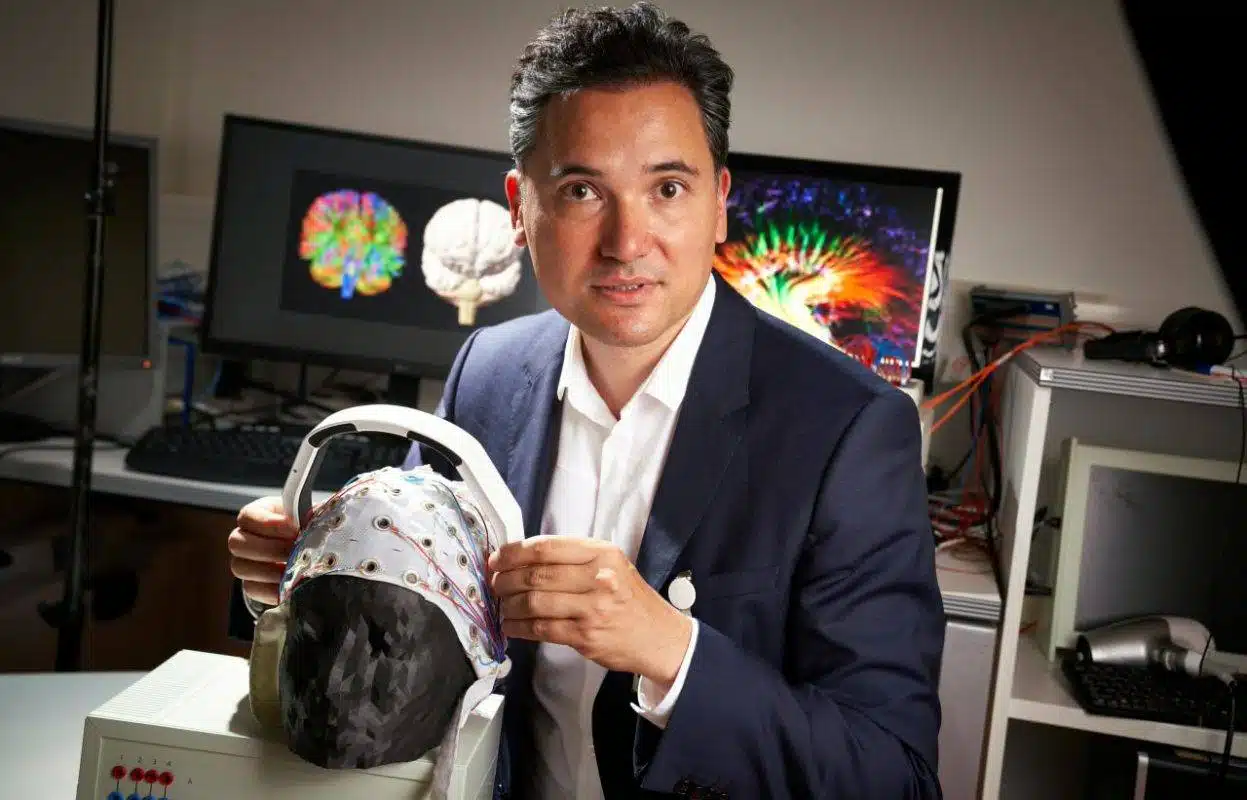
The Science
PEMF is a safe, trusted, and certified technology with proven results for relaxation, sleep, meditation, pain management and well-being. NeoRhythm PEMF wearable is the only device that works directly on a cellular level, offering unique benefits no other product can match.
PEMF: A Natural, Unique Technology for Wellness.
Explore how PEMF can enhance your well-being by boosting healing, relaxation, and overall vitality.
- Stimulates the Vagus Nerve: Supports nervous system balance by activating the vagus nerve, promoting relaxation, reducing stress, and improving overall well-being.
- Promotes Relaxation: Acts like a cellular spa, reducing stress and tension, while also improving sleep, focus, and supporting meditation.
- Relieves Pain: Provides effective pain relief by reducing inflammation and improving circulation to affected areas.
- Balances Cellular Functions: Harmonizes cells for improved overall health and balance.
- Enhances Blood Flow: Increases circulation, delivering essential nutrients and oxygen more efficiently.

Compare Our PEMF Devices: Find the Best Fit for Your Needs
All three devices share the same technical features, but their different designs help fit into your lifestyle.
NeoRhythm U-Band: Powerful PEMF for Vagus Nerve & Full-Body Use
The NeoRhythm U-Band is our most powerful PEMF device, designed for vagus nerve stimulation, deep relaxation, and full-body wellness. Wear it comfortably on your neck to stimulate the vagus nerve, or place it on your joints, or any body part for targeted relief. Whether you're looking to reduce stress, enhance focus, or support recovery, the U-Band delivers science-backed PEMF therapy exactly where you need it.

LIGHTWEIGHT & PORTABLE

SUITABLE FOR ALL BODY PARTS

SILENT & NON-INVASIVE
NeoRhythm PAD: Effortless PEMF for Sleep, Recovery & Relaxation
The NeoRhythm PAD efficiently enhances sleep quality, targets physical discomfort, and helps you de-stress. Designed for ultimate convenience, it can be placed on your back, under a pillow for better sleep, or on a chair—even in a vehicle—for on-the-go relaxation. Wherever you need support, the PAD delivers gentle, science-backed PEMF therapy to help you rest, recover, and feel your best.

SUITABLE FOR SLEEP

EASES BACK PAIN

PORTABLE & LIGHTWEIGHT
NeoRhythm TUBE: Targeted PEMF for Back & Neck Relief
Designed for travel and office use, the NeoRhythm TUBE provides ergonomic support while delivering targeted PEMF therapy for the back and neck. Its compact and versatile design makes it perfect for pain relief, relaxation, and improved focus—wherever you go.

PORTABLE & LIGHTWEIGHT

NECK & BACK SUPPORT

DESIGNED FOR OFFICE & TRAVEL
Different frequencies. Different functions.
Frequencies influence our well-being and body functioning in a familiar realm.





Delta waves
Are slow-frequency waves that mainly occur in our sleep. Research has shown that stimulating the brain to produce more Delta waves can trigger a slowdown in brain activity that will aid relaxation and sleep. Sometimes, Delta waves also occur during drug-induced dreamlike states, marking a condition when the brain stays active while being disconnected from sensory feelings from the environment.
Theta waves
Are often associated with feelings of calmness and with lower stress. Theta waves are also strong during meditation, prayer, and spiritual awareness, and are enhanced when you try to memorize new things or retrieve information from your memory.
Alpha waves
Often associated with feelings of calmness, relaxation, and reduced stress levels. They are most prominent when the mind is at ease, such as during light meditation, daydreaming, or restful moments. Alpha waves can also promote mental coordination and heightened learning states.
Beta waves
Are generated when the brain is stimulated and actively engaged in mental activities. Beta stimulation improves cognitive function, physical performance, and is characteristic of a strongly engaged mind. We are in Beta when we are mentally active and attentive.
Gamma waves
Occur when distant parts of the brain fire harmoniously, marking the simultaneous processing of complex information while performing demanding mental tasks. Stimulating the brain to produce more Gamma waves improves mental clarity and focus.
WHAT WILL YOU FEEL AFTER USING OUR PEMF DEVICE?

SENSE OF RELAXATION

IMPROVED MOOD

ENERGY BOOST
WHEN WILL YOU FEEL THE RESULTS?

USERS REPORTED THE EFFECTS WERE CONSTANT

USERS REPORTED THE INSTANT EFFECTS
Team Of Experts
NeoRhythm is used and developed by a team of experts in the fields of bioelectromagnetics, biology, biomedicine, psychology, and microbiology, utilizing PEMF in their everyday treatments.

Prof.Dr.med. Surjo R. Soekadar
with an electrode cap and the NeoRhythm device in the laboratory of his “Clinical Neurotechnology” group at the Charité in Berlin.
Why is NeoRhythm No. 1 Biohacking PEMF device
Discover the ultimate biohacking tools with the natural technology our bodies understand.


NeoRhythm PEMF wearable is the only device that works directly on a cellular level, offering unique benefits no other product can match. Backed by scientific studies, it’s one of the most researched PEMF technologies, proven to reduce pain, improve sleep, and boost mental clarity.
By delivering electromagnetic pulses deep into your cells, this advanced tool promotes healing, reduces inflammation, and enhances circulation. With multiple modes for relaxation, focus, and recovery, the portable device adapts to your needs anytime, anywhere.
For biohackers seeking real, science-backed results, this wearable offers unparalleled benefits, making it the ultimate tool for optimizing health and well-being.
WHY CHOOSE PEMF?





PEMF technology is inherently natural and non-intrusive, making it a gentle and harmonious way to promote wellness.
PEMF sessions can be completed in a relatively short amount of time, enabling users to receive the potential benefits quickly and efficiently.
We recommend using this program in the morning to promote an energetic start of your day and avoid any morning fog.
PEMF offers a comprehensive approach to wellness by targeting not only mental well-being but also physical health.
PEMF offers a comprehensive approach to wellness by targeting not only mental well-being but also physical health.
With PEMF, there is no steep learning curve or complex technique to master. Easy to control and disability-friendly NeoRhythm is accessible to people of all ages and backgrounds.
Experts explain how, why, and when to use NeoRhythm
Dr. Cody Rall
Dr. Cody Rall explains how we are influenced by frequencies.
Dr. Edmund Cavazos
Learn more about each brainwave state from Dr. Edmund Cavazos.









